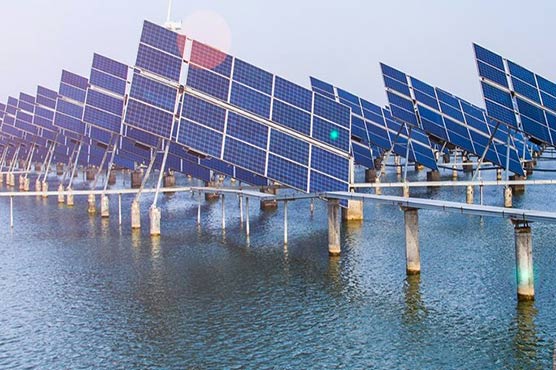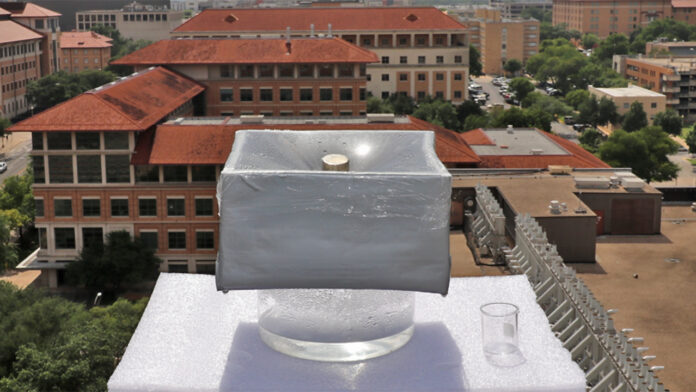Recently, researchers have been working to upgrade solar stills as a cheap, low-tech alternative. The traditional still is little more than a black-bottomed vessel filled with water and topped with clear glass or plastic. The black bottom absorbs sunlight, heating water so that it evaporates and leaves the contaminants behind. The water vapor then condenses on the clear covering and trickles into a collector.
But the output is low because the sun’s rays must heat the entire volume of water before evaporation begins. Commercially available versions produce about 0.3 liters of water per hour per square meter (L/h/m2) of the covered water’s surface area. The average person requires about 3 liters of water a day for drinking. Providing enough drinking water for a small family requires a still around 5 square meters in size. Operating at their theoretical best, such devices can only produce 1.6 L/h/m2.
Guihua Yu, a materials scientist at the University of Texas in Austin, and colleagues recently reported a way around this limit. It involves hydrogels, polymer mixtures that form a 3D porous, water—absorbent network. Yu and colleagues fashioned a gellike sponge of two polymers—one a water-binding polymer called polyvinyl alcohol (PVA), the other a light absorber called polypyrrole (PPy)—which they then placed atop the water’s surface in a solar still.
Inside the gel, a layer of water molecules bonded tightly to the PVA, each forming multiple chemical links known as hydrogen bonds. But with so much of their bonding ability tied up with the PVA, the bound water molecules bind only loosely to other nearby water molecules, creating what Yu calls “intermediate water.” Because intermediate water molecules share fewer bonds with their neighbors, they evaporate more readily than regular water. And when they do, they’re immediately replaced by other water molecules in the still. Using this technology, Yu’s solar still produced 3.2 L/h/m2 of water, double the theoretical limit, his team reported last year in Nature Nanotechnology.

“This is a fantastic starting point,” says Peng Wang, an environmental engineer at King Abdullah University of Science and Technology in Thuwal, Saudi Arabia. Wang notes that at this higher water production rate, a solar still 1 square meter in size could produce about 30 liters of clean drinking water per day, enough for a small family. Even better, he says, all three polymers in the hydrogel are both commercially available and cheap. That means that if the stills using them are rugged enough, they could help provide clean water for those who need it most.
Analysis:
The use of solar power to generate and create clean drinking water is a great and innovative solution to the water crisis in the world. The further development of solar technology to create a larger source of water that is easier to access by average individuals would useful and offer great relief to areas like Michigan which is still having water problem. This growth in technology can also assist past water and could be used for other things like air and etc.




